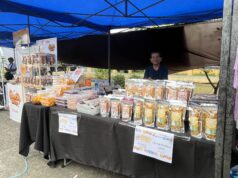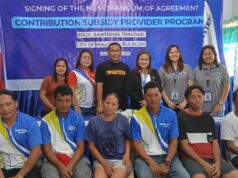“In the US, there is now such a thing as ghost tourism which are promoted by tourism outfits touring clients to haunted places,” said Guy Hilbero, chief tourism officer of Mabalacat City which hosts most parts of this freeport zone.
Hilbero said that “one of these days, you might just find ghost hunting among the items in our tourism brochures.”
Hilbero noted that various reputed haunted places here have already been featured in international cable channels, including National Geographic.
“Ghost tourism can be cited as one feature to attract tourists to Clark, on top of golf courses and resorts and night life in neighboring cities,” he said.
Clark is said to be haunted mostly by foreign ghosts, mostly Americans and Japanese because it had been occupied by the US military from 1901 up to 1991 when the Americans pulled out amid the eruption of Mt. Pinatubo and the scrapping of the US-Philippine Military Bases Agreement, Hilbero recalled.
Indeed, one cellphone video which has had tens of thousands of hits on YouTube was taken at an abandoned building here some five years ago, showing several translucent ghosts, believed to be those of Americans, walking about in a room. The video could be accessed on YouTube by searching for Clark ghosts.
“Scores of Americans died when the Japanese bombed Clark at the start of World War II in 1942. In 1945 when the Americans came back to retake Clark, Japanese soldiers also died in the process,” he noted.
Hilbero cited some of the most haunted places here as the abandoned US military hospital which had hosted a basement morgue for those who had died in the Vietnam War in the 1960’s before they were flown back to the US and the never-finished restaurant building at the Mimosa resort which used to be the location of the American cemetery before the remains were moved to the still active US cemetery at the main gate of Clark within Angeles City.
He also cited the Lily Hill where the Japanese soldiers built artificial caves and where most of them died defending Clark from being repossessed by the Americans in 1945, a small building now used as a tourism department office of the Clark Development Corp., from where night joggers hear sounds of partying Americans at dawn, and a site with three Aguso pine trees stand together along the road towards the Mabalacat gate where a “white lady” is reportedly seen crossing in the darkness and causing vehicular accidents.
“Of course, there is also the pet cemetery towards the Nayong Pilipino theme park, but no one has reported any dog ghosts there,” Hilbero said.
Hilbero said he himself believes in ghosts and other forms of life in the spirit world.
“There is really nothing to fear. Even the Aeta tribal folk who have lived in the Mt. Pinatubo mountains and were free to roam Clark during the time of the Americans know they exist,”
He said the Aetas refer to ghosts as “kamara” and so not to disturb them where they are known to dwell, such as in haunted areas including forests, they merely ask for permission for passage.
“They would say ‘Bari-bari apu’ before passing by or through a haunted place. The Aeta phrase means ‘May I pass’,” he added.




